There’s a new outfit in town and its abilities have triggered pangs of wanderlust in a sidecar sceptic
The world of sidecars and their owners is a strange one, and it’s one that not many of us normal motorcycle riders ever get to experience. You’re either into outfits or you’re not. However, being a lover of anything resembling a motorcycle I’ve always wanted to have a crack at one and I finally got to scratch the sidecar off my bucket list when I recently sampled Changjiang’s CJ650 Nomad.

Sidecars, to me anyway, are vehicles with all the disadvantages of a car and a motorcycle rolled into one. However, that said, the weekend I spent on the latest three-wheel offering to land on Australian shores was one of the most enjoyable riding weekends I’ve had in a very long time.
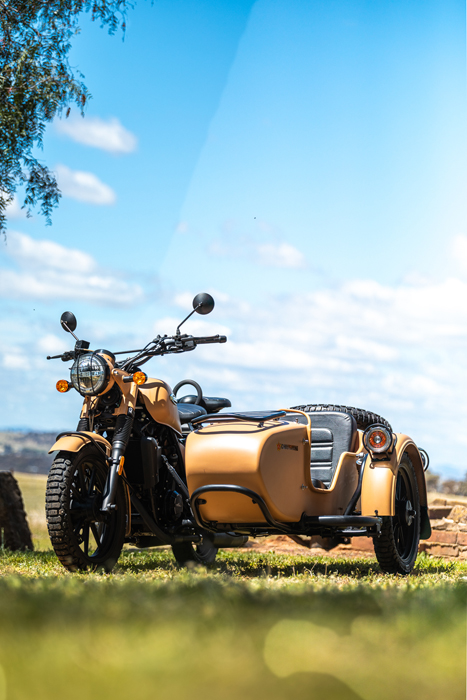
Sidecar aficionados will do a lot of eye-rolling while reading this test, I’m sure. However apart from the Nomad’s mechanical and riding credentials, it’s not really a test – or perhaps a machine – aimed at them. As a sidecar newby, I tested the Nomad the only way I knew how: get on, open it up and see how much fun I could wring out of it. And it scored highly against my ‘let it have it’ yardstick.

We’ve been trying to get a spin on the CJ650 for quite some time now but getting the time to hook up with the Australian distributor in Queensland when I’m based in NSW had proved a stumbling block. But when the Nomad and its Tourer sibling lobbed at the Cowra-based Changjiang dealer, Highland Classics, stars aligned.
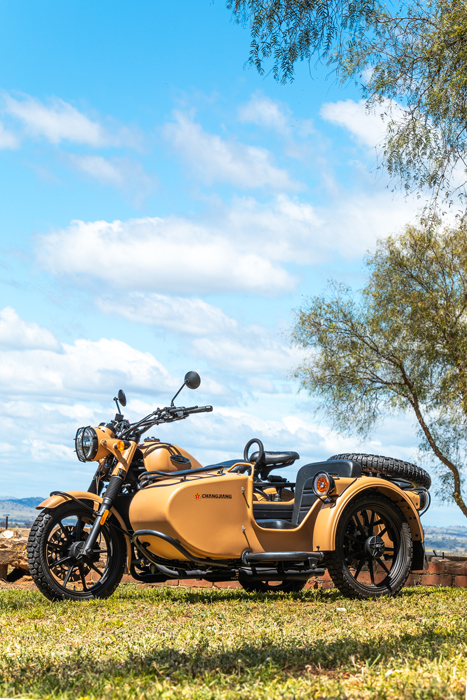
I have family and friends in Cowra, which meant I had no shortage of willing (and unwilling) passengers. As a result, the Nomad became a regular fixture on the roads around Cowra, and we did everything from dirt-road blasts, country-road cruising, school drop-offs, designated-rider duties and it even made an appearance at the 2023 Cowra Spring Show.
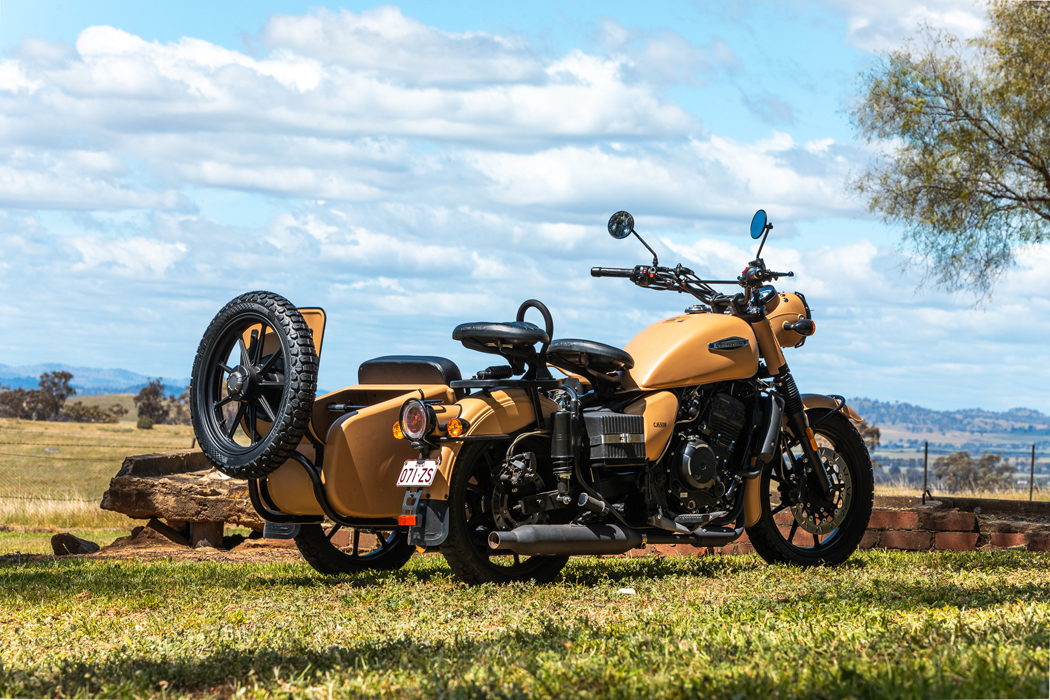
I’ll give the Nomad one thing, it sure is a head-turner with its vintage military-style design and I’ll go so far as to say it looks bloody cool. This is an opinion no doubt shared by many because the Nomad was never short of a crowd when I parked it, especially at the annual Cowra show where it became a crowd-drawing attraction all of its own.

The quality of the fit and finish is excellent, except for a few frame welds that are less than pretty, but you need to go looking for these as they aren’t immediately apparent. As well as looking like a quality bit of kit, the Nomad also feels sturdy and well built. We’ve all come across vehicles that look good from a distance, but on closer inspection bits and pieces feel like they’ll break or fall off after a while, but this isn’t the case with the Nomad. There’s nothing about it that feels cheap and nasty – I was impressed.
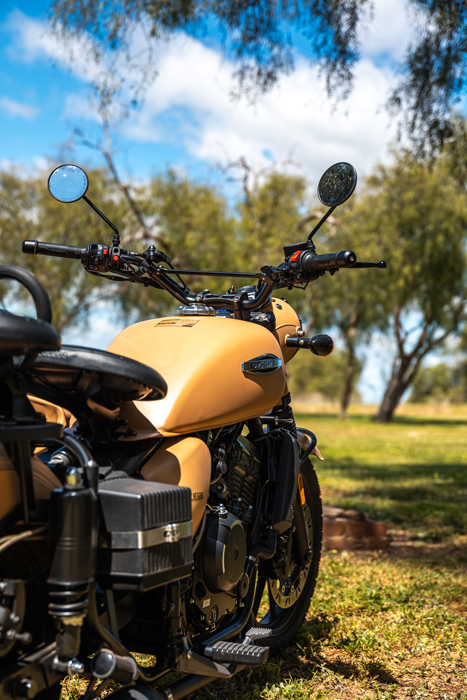
There’s a full deck of LED lighting and when you climb on board you’re met by a single instrument cluster with analogue tacho combined with an LCD section for speed, gear position, a fuel gauge and odo.

In a nod to its retro theme, there’s a deck of idiot lights that reside on the top of the headlight binnacle which might complement the look but, because they are dimly lit and tucked in behind the instrument cluster, they are difficult to see in the daylight. This could potentially be a problem if you’re not keeping a good eye on them, because these warning lights – indicator, neutral and oil – aren’t replicated anywhere else on the instrument panel.

The chair itself is a comfortable affair with all reports returning that both the seating position and padding is well thought out and supportive, as well as having plenty of leg room. There’s a seatbelt to stop your passenger from being launched out if you’re tackling rough stuff, and there’s a digital volt meter, a 12-volt power outlet and dual USB plugs for your charging and powering pleasure.
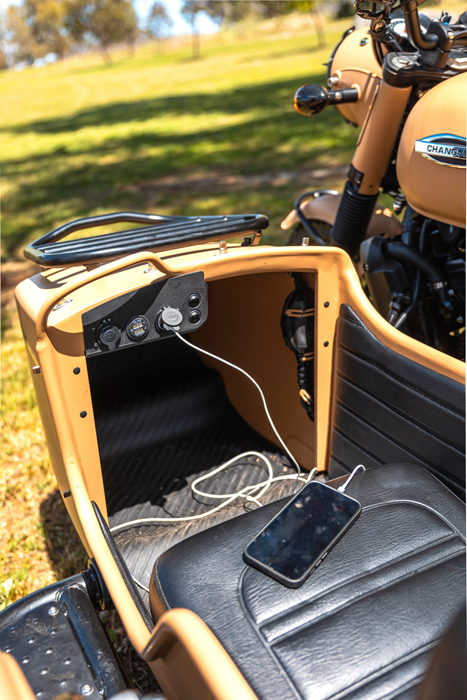
Directly behind the chair and under the spare wheel is a voluminous and lockable boot with enough room to store a ton of gear – you’d easily fit two full-face helmets plus enough gear for a weekend away. Or three bags of ice and a carton of beer, if you’re that way inclined.

Although the Nomad carries itself with an undeniable retro swagger, it is powered by a modern, water-cooled, 649cc CFMoto engine that puts out a claimed 41kW of power at 8000rpm and a gutsy 62Nm of torque at 7000rpm. The powerplant is similar to that used in CFMoto’s 650NK, MT and GT models but has been specifically tuned to suit the Nomad.
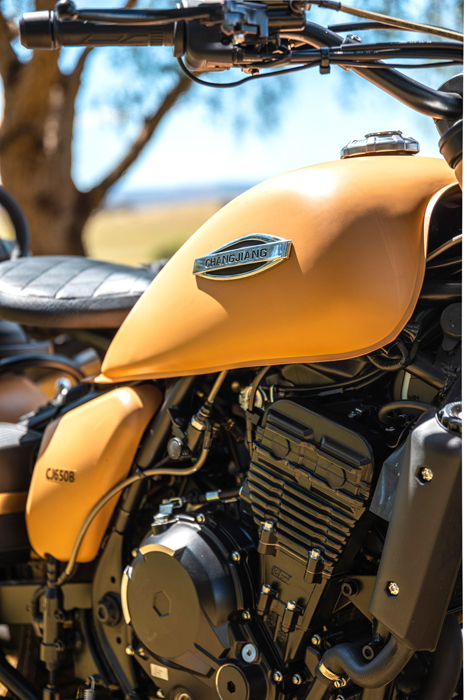
With 365kg to drag around it’s hardly a fire-breathing monster, but the fuel-injected parallel-twin has enough mumbo to cruise the highway, cart a stack of gear and a buddy around, and to even have a bit of a hoon on.
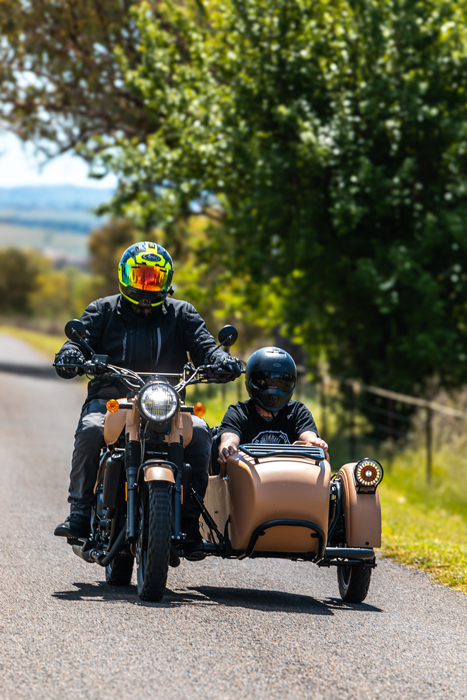
There’s a four-speed gearbox with a reverse gear that channels power to the rear wheel via a chain final drive. You may be wondering why it only has a four-speed ’box, but once you see more than 100km/h on the analogue and LCD combination gauge you realise why – anything over this isn’t the Nomad’s happy place – but more on that soon.
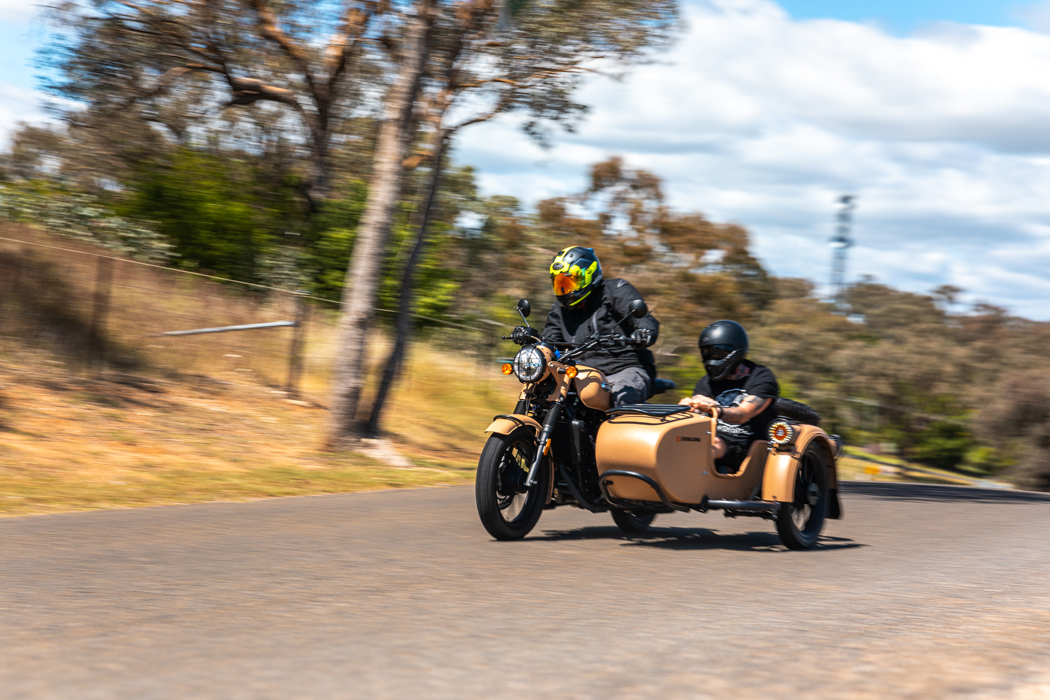
The gearbox pattern is a bit different to your usual motorcycle. From neutral, it’s four up, with reverse being one down. In order to select reverse gear with the foot pedal, you also need to yank on a small lever above the left-hand side of the handlebar which opens a ‘gate’ to allow you to engage it. It’s essentially a safety switch so that muscle memory doesn’t mean you accidentally slam into reverse while you’re downshifting. And there’s a similar-looking lever above the right-hand side, which is a parking brake. The gearbox feels a bit agricultural, but it’s fair to say I have been spoilt, and there were no issues that came to light on my test. I did encounter the occasional false neutral when riding became aggressive, however that’s likely down to the Nomad having very few kilometres on the clock when I picked it up. I expect it to loosen up and feel smoother as the kays roll by.
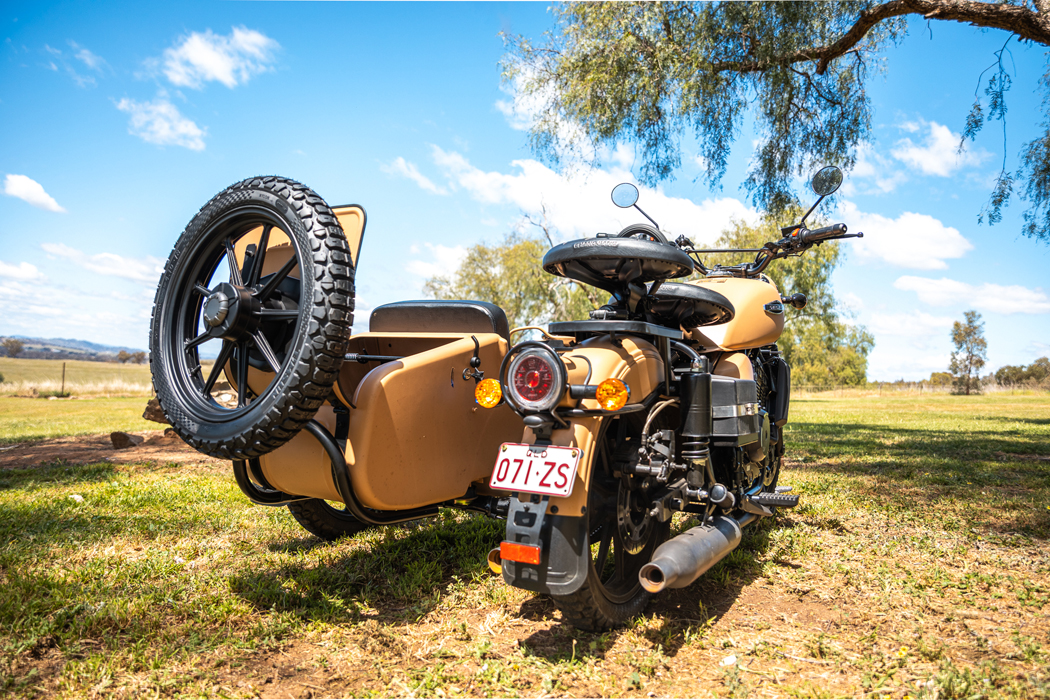
Braking is handled by Kailing calipers squeezing a 320mm disc on the front and 265mm discs on both the rear wheel and the chair’s wheel. The brakes are perfectly adequate, so much so that I didn’t think about them. That’s usually a sign that they aren’t brilliant and aren’t poor, they’re just right.
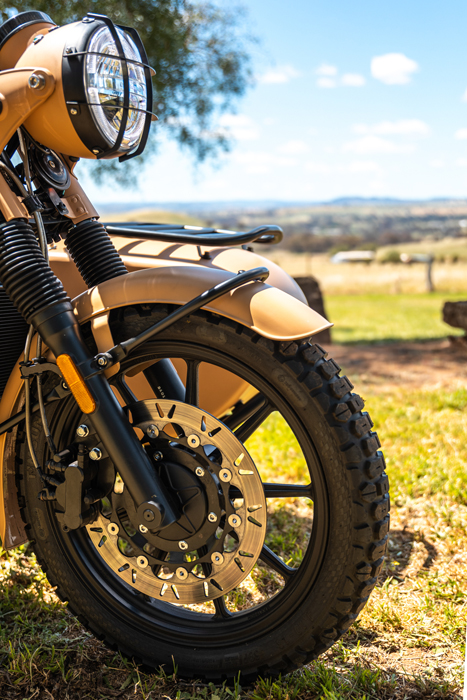
Suspension is no-frills KYB componentry, with a non-adjustable 41mm fork up front and twin shocks on the rear with five-stage preload adjustment. To smooth out the ride for the rider and pillion, both seats also run a small shock underneath and it all combines for a comfortable ride. I had no interest in adjusting the preload and I didn’t long for better suspension performance either on- or off-road. I’m pleased to say that the suspension worked perfectly, even at high speeds, and on bumpy dirt roads the Nomad is better behaved if you carry more speed rather than less. My sidecar guinea pig Marc relayed this fact back to me after an enthusiastic run along the dirt roads around Cowra’s historic POW camp.
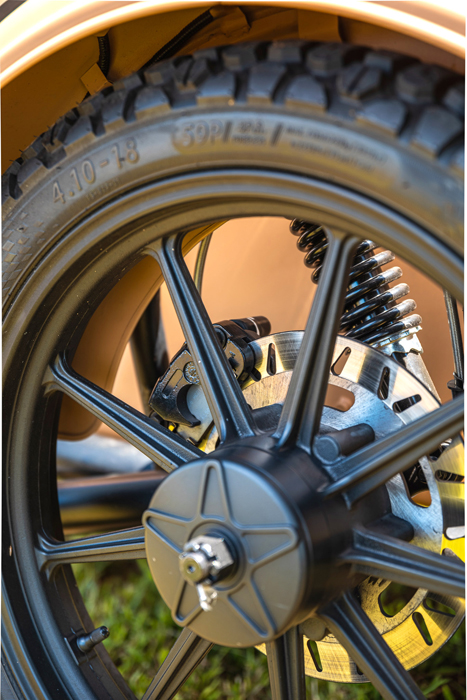
As sidecar enthusiasts will know, while riding solo is of course possible, it’s not for the faint hearted or inexperienced. The ride is bumpier and less stable and left-hand corners are – at least at first – a frightening experience, especially if the corner is off camber. With no weight over the inside wheel, you can find yourself on two wheels and filling your underpants at surprisingly low speeds. If you can’t find a willing traveller, then grab some sort of ballast for a better, safer ride.

Riding a sidecar engages muscles you just don’t use on a regular motorcycle. The Nomad doesn’t lean although you’ll need to, and you’ll need to put in the work and turn the handlebar to get the sucker to turn, counter-steering goes out the window for the most part.

Although the technique is different, riding the Nomad is not a passive experience, and body position is just as important as it is on a two-wheeler. If you’re really pushing it, you’ll also need your passenger to do their bit in keeping the CJ on three wheels – or at least on two controlled wheels. As my offsider Marc found out while we were exploring the sideways potential of the Nomad, if the passenger doesn’t get their weight where it needs to be, they’re going to end up with a headache from continued elbow blows to the helmet at best.

I don’t want to make it seem that the Nomad is hard work to ride, if you’re riding like Changjiang probably intended it to be ridden you can plug along in comfortable safety, taking in the countryside with little effort, but if you want to push it, it takes some physical exertion to make it work, which both Marc and I enjoyed.

During my time on the Nomad, I had the reoccurring thought of packing the outfit up and embarking on some epic journey around Australia. It’s comfortable enough, feels sturdy enough and it sure would look the part on some outback dirt road. My only hesitation would be the fact that’s it’s a relatively new brand in this country and sourcing parts could be problematic if you came unstuck and needed to make repairs.

There will be people who are going to have concerns because it’s Chinese-made, but that’s a concern that’s losing credibility rapidly these days. It’s worth going to check one out in the flesh and conduct a test ride, because after giving the Nomad an absolute thrashing for a few days I feel pretty confident that it’s a solid and well-built unit. In fact, if Changjiang wants to offer one up for a longer-term test, I’d happily take off into the outback.
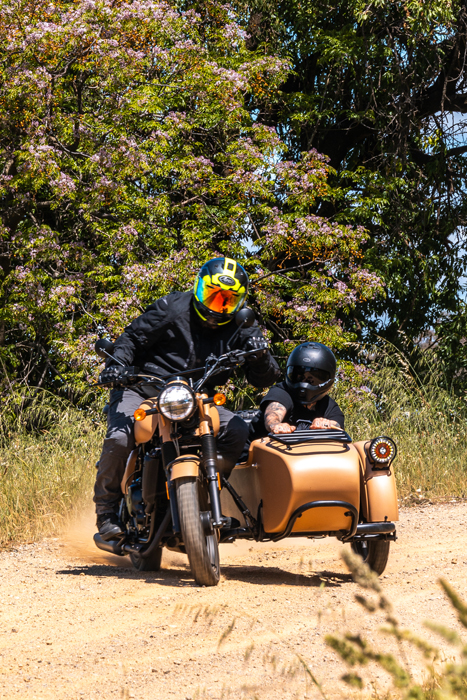
TEST: PETE VORST PHOTOGRAPHY BRENT YOUNG